Koitsu Tsuchiya: Master of light and shadow in Shin Hanga
Koitsu Tsuchiya (1870–1949) was a prominent artist in the Shin Hanga movement, celebrated for his atmospheric landscapes and evocative use of light and shadow. His work is widely admired for its ability to capture the mood and ambiance of different times of day and seasons, making him one of the leading landscape artists of the early 20th century.
 The floating pavilion at Katada in the snow (Yuki no Katada Ukimido), Koitsu Tsuchiya, 1934. Source: Wikimedia Commonsꜛ (license: public domain)
The floating pavilion at Katada in the snow (Yuki no Katada Ukimido), Koitsu Tsuchiya, 1934. Source: Wikimedia Commonsꜛ (license: public domain)
Biography
Koitsu Tsuchiya (土屋 光逸), born Tsuchiya Sahei on September 23, 1870, in Hamamatsu, Shizuoka Prefecture, Japan, was a prominent artist in the Shin Hanga movement, celebrated for his atmospheric landscapes and evocative use of light and shadow. His work is widely admired for its ability to capture the mood and ambiance of different times of day and seasons, making him one of the leading landscape artists of the early 20th century.

Koitsu Tsuchiya in 1902. Source: Wikimedia Commonsꜛ (license: public domain)
Koitsu’s journey into the world of art began at a young age when he moved to Tokyo at the age of 15 to apprentice under Kobayashi Kiyochika, a well-known artist of the Meiji era who was famous for his ukiyo-e prints that incorporated Western-style shading and perspective. Under Kiyochika’s tutelage, Koitsu learned the techniques of woodblock printing, particularly the dramatic use of light and shadow, which would become a hallmark of his later work.
After completing his apprenticeship, Koitsu initially worked as a lithographer and illustrator before eventually returning to woodblock printing. In the early 20th century, Koitsu became associated with the Shin Hanga movement, thanks in large part to the efforts of the influential publisher Watanabe Shōzaburō, who recognized Koitsu’s talent for capturing the subtle interplay of light and dark in his landscapes.
Koitsu’s prints quickly gained popularity, both in Japan and abroad, for their atmospheric quality and meticulous attention to detail. His ability to convey the mood of a scene through the careful manipulation of light made his work stand out among his contemporaries.
Koitsu Tsuchiya continued to produce prints until his death on November 13, 1949. His legacy as a master of landscape art within the Shin Hanga movement remains strong, with his works continuing to be highly sought after by collectors and admired by art enthusiasts around the world.
Artistic style and significance
Koitsu Tsuchiya is best known for his landscape prints, which are characterized by their dramatic use of light and shadow, meticulous detail, and the ability to evoke a strong sense of atmosphere and mood. His work reflects a deep understanding of both traditional Japanese aesthetics and the modern techniques that were being explored during the Shin Hanga movement.
Mastery of light and Shadow
One of the defining features of Koitsu’s work is his exceptional ability to manipulate light and shadow to create mood and atmosphere in his prints. This technique, known as kōshi, was heavily influenced by his early training under Kobayashi Kiyochika. Koitsu’s prints often depict scenes at dawn, dusk, or night, times of day when the interplay of light and dark is most pronounced. His use of light to highlight certain areas of a composition while allowing others to recede into shadow creates a sense of depth and three-dimensionality that draws the viewer into the scene.
 Akashi strand Akashi no hama, Koitsu Tsuchiya, 1957. Source: Wikimedia Commonsꜛ (license: public domain)
Akashi strand Akashi no hama, Koitsu Tsuchiya, 1957. Source: Wikimedia Commonsꜛ (license: public domain)
Koitsu’s landscapes are often imbued with a sense of tranquility and solitude, enhanced by his careful attention to the effects of light on water, snow, and other natural elements. Whether depicting the glow of lanterns on a snowy street or the reflection of moonlight on a quiet river, Koitsu’s work captures the fleeting beauty of the natural world in a way that is both realistic and deeply poetic.
Atmospheric landscapes: Capturing the spirit of place
Koitsu’s landscapes are celebrated for their ability to convey the spirit and ambiance of a place. His prints often depict famous locations in Japan, such as Mt. Fuji, temples, shrines, and scenic coastal areas, rendered with a level of detail that brings the scenes to life. Koitsu’s meticulous approach to composition and his sensitivity to the changing moods of nature allow his prints to capture the essence of a place at a specific moment in time.
In addition to his Japanese landscapes, Koitsu also created prints depicting scenes from China and Korea, which were influenced by his travels to these regions. These prints reflect his ability to adapt his techniques to capture the unique qualities of different environments, further demonstrating his versatility as an artist.
Legacy and influence
Koitsu’s contribution to the Shin Hanga movement is significant, particularly in the realm of landscape art. His prints helped to revive and sustain interest in traditional Japanese woodblock printing during a period of rapid modernization, and his work continues to be celebrated for its technical mastery and artistic beauty.
Koitsu’s ability to convey mood and atmosphere through the use of light and shadow has had a lasting impact on the genre of landscape art. His prints remain highly valued by collectors and continue to inspire admiration for their craftsmanship and emotional depth.
Notable works
Throughout his career, Koitsu Tsuchiya produced numerous prints that are considered masterpieces of the Shin Hanga movement. Here are some of his most famous works:
 Nagoya Castle, Koitsu Tsuchiya, 1937. Source: Wikimedia Commonsꜛ (license: public domain)
Nagoya Castle, Koitsu Tsuchiya, 1937. Source: Wikimedia Commonsꜛ (license: public domain)
 Chinese Warship Ting Yuang Visiting Japan, Koitsu Tsuchiya. Source: Wikimedia Commonsꜛ (license: public domain)
Chinese Warship Ting Yuang Visiting Japan, Koitsu Tsuchiya. Source: Wikimedia Commonsꜛ (license: public domain)
 Asakusa Kinryūzan Temple, from Sketches of Famous Places in Japan, Koitsu Tsuchiya, 1938. Source: Wikimedia Commonsꜛ (license: public domain)
Asakusa Kinryūzan Temple, from Sketches of Famous Places in Japan, Koitsu Tsuchiya, 1938. Source: Wikimedia Commonsꜛ (license: public domain)
 Rain at Kofuku-ji, Koitsu Tsuchiya, 1937. Source: Wikimedia Commonsꜛ (license: public domain)
Rain at Kofuku-ji, Koitsu Tsuchiya, 1937. Source: Wikimedia Commonsꜛ (license: public domain)
 Unknown title, Koitsu Tsuchiya, 1949. Source: Wikimedia Commonsꜛ (license: public domain)
Unknown title, Koitsu Tsuchiya, 1949. Source: Wikimedia Commonsꜛ (license: public domain)
 Japanese Representatives Meet with a Chinese Peace Mission (Seiwashi danpan no zu), Koitsu Tsuchiya. Source: Wikimedia Commonsꜛ (license: public domain)
Japanese Representatives Meet with a Chinese Peace Mission (Seiwashi danpan no zu), Koitsu Tsuchiya. Source: Wikimedia Commonsꜛ (license: public domain)
 Hurrah! Hurrah! for the Triumphal Return of His Majesty (Ban banzai gaisen no zu), Koitsu Tsuchiya. Source: Wikimedia Commonsꜛ (license: public domain)
Hurrah! Hurrah! for the Triumphal Return of His Majesty (Ban banzai gaisen no zu), Koitsu Tsuchiya. Source: Wikimedia Commonsꜛ (license: public domain)


Left: Miyajima in the Rain, Koitsu Tsuchiya, 1941. Source: ukiyo-e.orgꜛ (license: public domain) – Right: Unknown title, Koitsu Tsuchiya, 1949. Source: Wikimedia Commonsꜛ (license: public domain)


Left: Wakanoura, Koitsu Tsuchiya, 1936. Source: ukiyo-e.orgꜛ (license: public domain) – Right: Unknown title, Koitsu Tsuchiya, 1949. Source: Wikimedia Commonsꜛ (license: public domain)
 Unknown title, Koitsu Tsuchiya, 1949. Source: Wikimedia Commonsꜛ (license: public domain)
Unknown title, Koitsu Tsuchiya, 1949. Source: Wikimedia Commonsꜛ (license: public domain)
 Unknown title, Koitsu Tsuchiya, 1949. Source: Wikimedia Commonsꜛ (license: public domain)
Unknown title, Koitsu Tsuchiya, 1949. Source: Wikimedia Commonsꜛ (license: public domain)


Left: Asakusa Kannon Shrine, Koitsu Tsuchiya, 1930. Source: ukiyo-e.orgꜛ – Right: The Statue of the Buddha at Kamakura, Koitsu Tsuchiya, 1930. Source: ukiyo-e.orgꜛ
 Port Maizuru and key, Koitsu Tsuchiya, 1936. Source: ukiyo-e.orgꜛ
Port Maizuru and key, Koitsu Tsuchiya, 1936. Source: ukiyo-e.orgꜛ
 Tokumaru, Koitsu Tsuchiya, 1950. Source: ukiyo-e.orgꜛ
Tokumaru, Koitsu Tsuchiya, 1950. Source: ukiyo-e.orgꜛ
 Evening at Ueno Park, Koitsu Tsuchiya, 1935. Source: ukiyo-e.orgꜛ
Evening at Ueno Park, Koitsu Tsuchiya, 1935. Source: ukiyo-e.orgꜛ


Left: Zozo-ji in Snow (Chuban), Koitsu Tsuchiya, 1930. Source: ukiyo-e.orgꜛ – Right: Snow scene of Fuji, Koitsu Tsuchiya. Source: ukiyo-e.orgꜛ
 Maiko-no hama, Koitsu Tsuchiya, 1936. Source: ukiyo-e.orgꜛ
Maiko-no hama, Koitsu Tsuchiya, 1936. Source: ukiyo-e.orgꜛ
 Mt. Fuji Seen from Lake Kawaguchi, Koitsu Tsuchiya, 1933. Source: ukiyo-e.orgꜛ
Mt. Fuji Seen from Lake Kawaguchi, Koitsu Tsuchiya, 1933. Source: ukiyo-e.orgꜛ
 Nijubashi Bridge, Koitsu Tsuchiya, 1939. Source: ukiyo-e.orgꜛ
Nijubashi Bridge, Koitsu Tsuchiya, 1939. Source: ukiyo-e.orgꜛ
 Benkei Bridge, Koitsu Tsuchiya, 1933. Source: ukiyo-e.orgꜛ
Benkei Bridge, Koitsu Tsuchiya, 1933. Source: ukiyo-e.orgꜛ
 Barber’s Shop, Koyasuhama, Koitsu Tsuchiya, 1931. Source: ukiyo-e.orgꜛ
Barber’s Shop, Koyasuhama, Koitsu Tsuchiya, 1931. Source: ukiyo-e.orgꜛ
 Nikko Yomei Gate, Koitsu Tsuchiya, 1939. Source: ukiyo-e.orgꜛ
Nikko Yomei Gate, Koitsu Tsuchiya, 1939. Source: ukiyo-e.orgꜛ
 Arashiyama, Koitsu Tsuchiya, 1930. Source: ukiyo-e.orgꜛ
Arashiyama, Koitsu Tsuchiya, 1930. Source: ukiyo-e.orgꜛ
 Benkei Bashi Bridge, Koitsu Tsuchiya, 1930. Source: ukiyo-e.orgꜛ
Benkei Bashi Bridge, Koitsu Tsuchiya, 1930. Source: ukiyo-e.orgꜛ
 Sunset at Tomonotsu, Koitsu Tsuchiya, 1940. Source: ukiyo-e.orgꜛ
Sunset at Tomonotsu, Koitsu Tsuchiya, 1940. Source: ukiyo-e.orgꜛ
 Ginza no ame, Koitsu Tsuchiya, 1933. Source: Wikimedia Commonsꜛ (license: public domain)
Ginza no ame, Koitsu Tsuchiya, 1933. Source: Wikimedia Commonsꜛ (license: public domain)
Conclusion
Koitsu Tsuchiya is remembered as one of the most significant landscape artists of the Shin Hanga movement, particularly for his mastery of light and shadow. His prints, characterized by their atmospheric quality, meticulous detail, and ability to capture the mood and spirit of a place, continue to be celebrated for their artistic beauty and technical excellence. Koitsu’s work remains highly valued by collectors and art enthusiasts, ensuring his lasting place in the history of Japanese art.
References and further reading
- Chris Uhlenbeck, Jim Dwinger, Philo Ouweleen, Shin Hanga - Die »Neuen Drucke« Japans 1900-1950, 2022, Hatje Cantz, ISBN: 9783775752190
- viewingjapaneseprints.netꜛ
- Koitsu Tsuchiya in ukiyo-e.orgꜛ
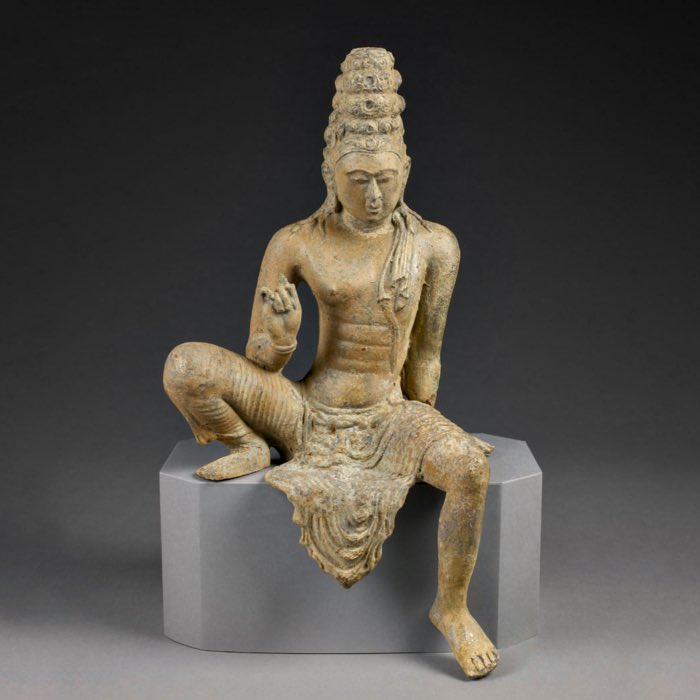


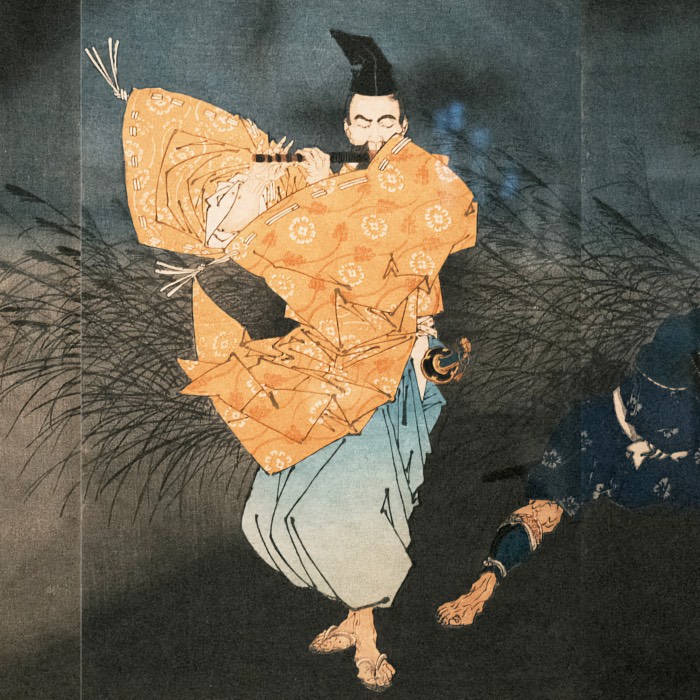
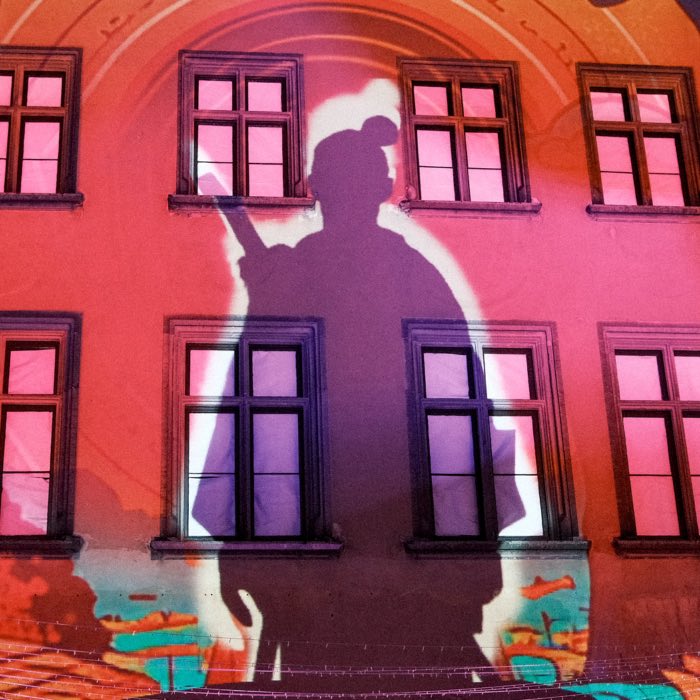
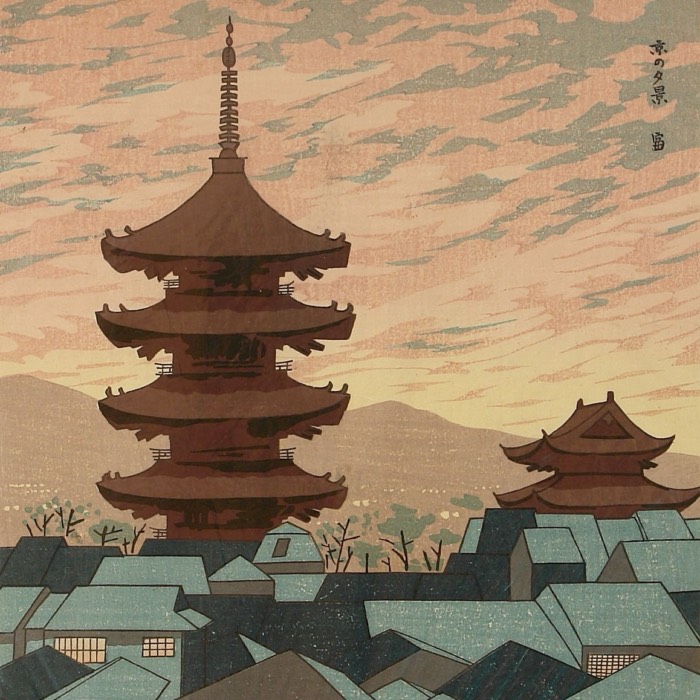

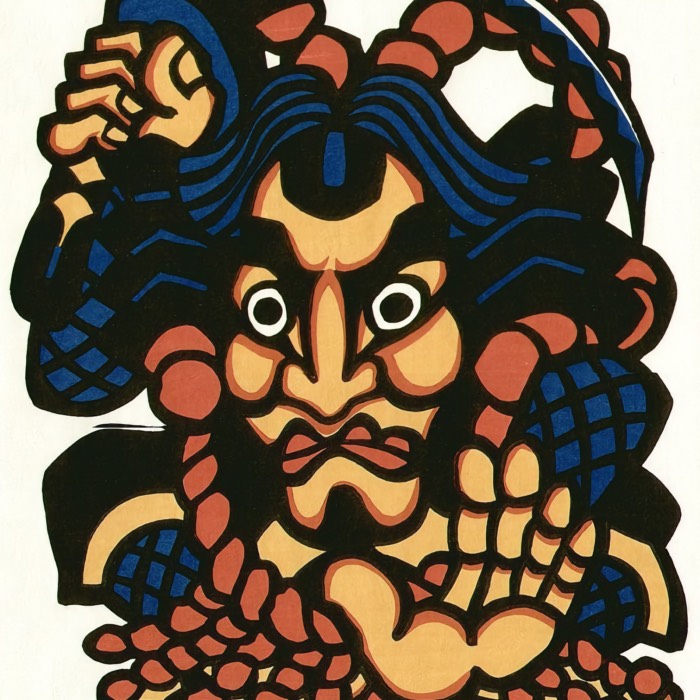
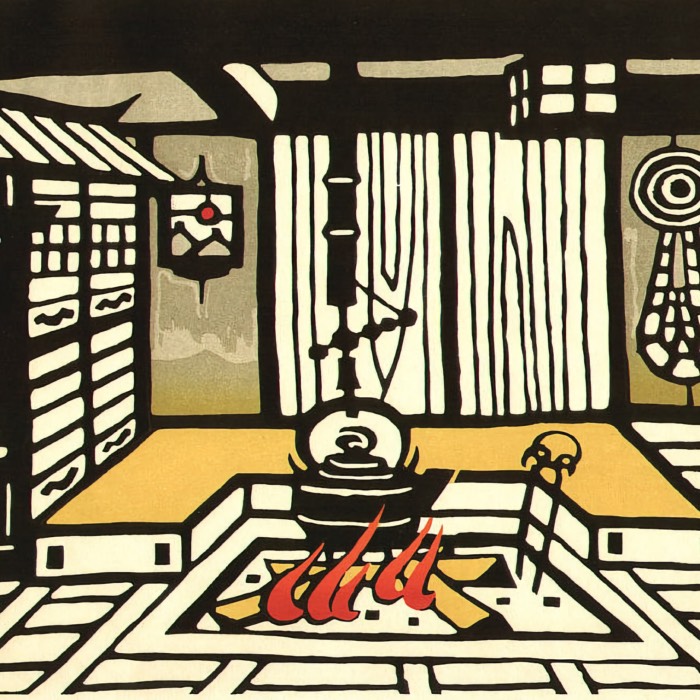
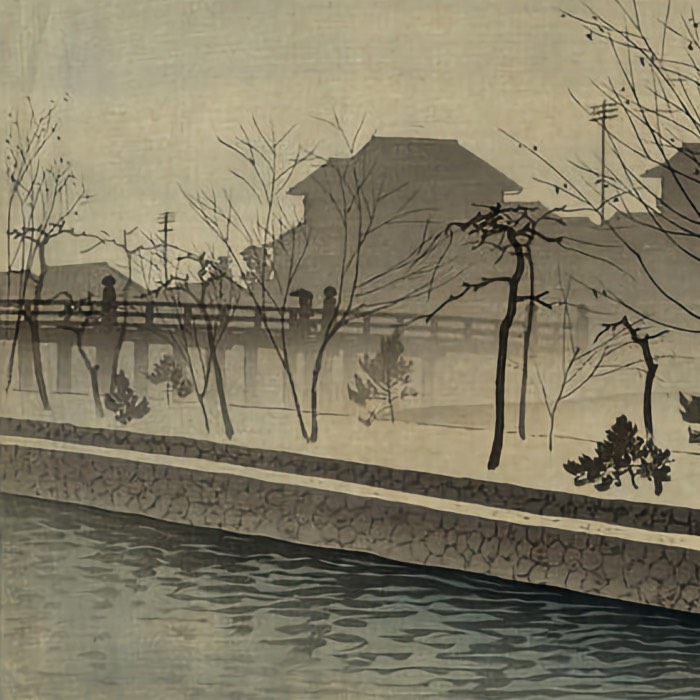
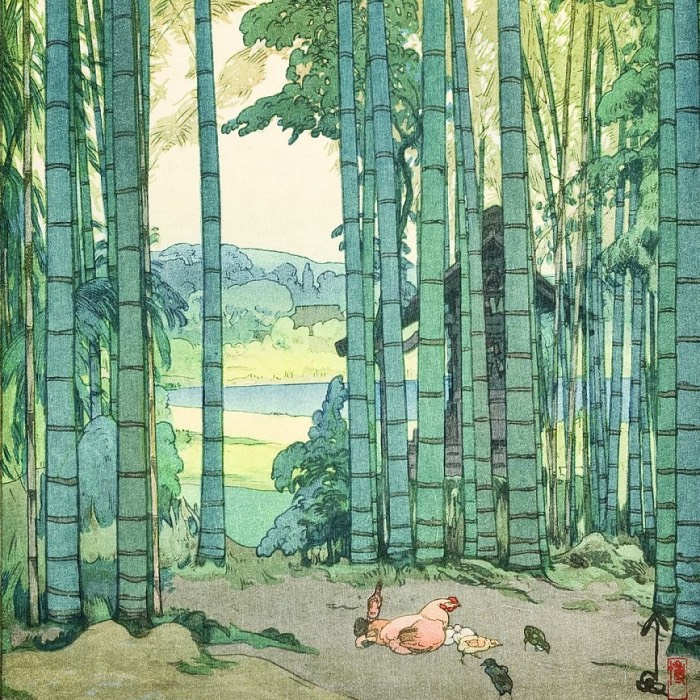
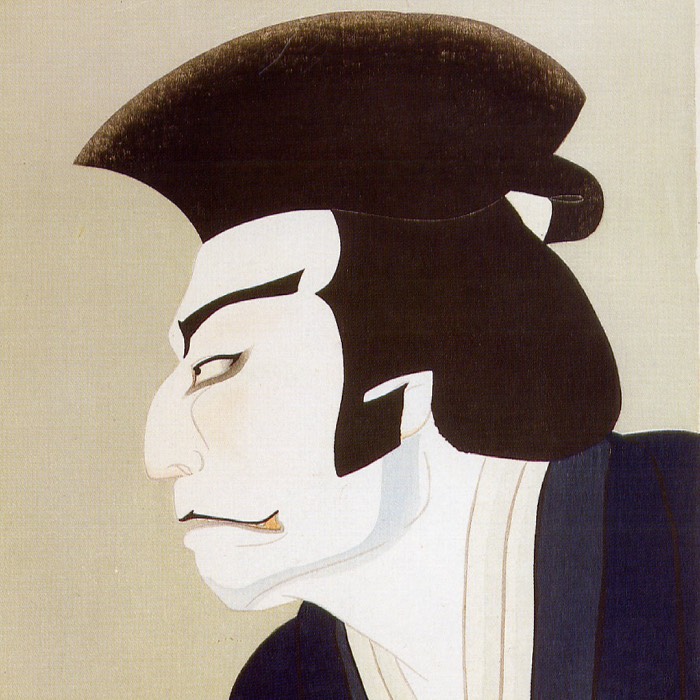
comments